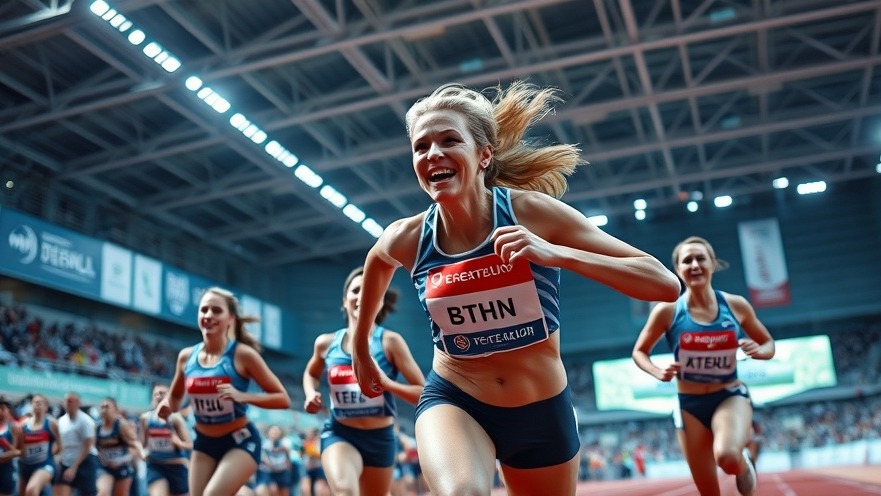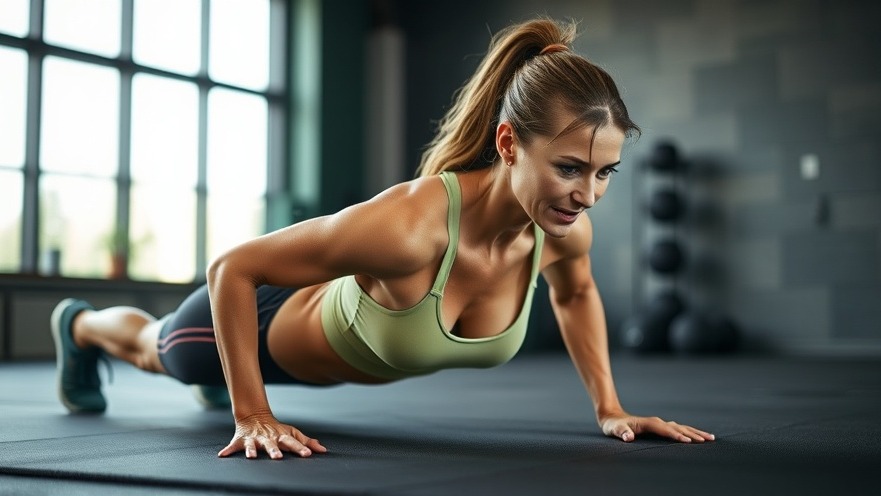
Maximizing Hyrox Performance: Why Age Matters
With 650,000 athletes set to compete in Hyrox this year, the intensity of competition drives the need for tailored training plans. Those over 30, in particular, face unique physiological challenges that can impact their performance. As Gede Foster, Hyrox ambassador and Director of Fitness and Performance at FIIT, emphasizes, age-specific training considerations are vital. Factors like strength retention and power output become critical as individuals navigate the natural changes brought on by aging.
Understanding Strength and Muscle Mass Preservation
As women age, they can lose 3-8% of muscle mass with each passing decade due to hormonal shifts, particularly during menopause. Incorporating strength training into your routine is essential for maintaining both muscle mass and metabolic rate. Focus on compound lifts, using heavy weights for low reps (4-6 reps per set) to build strength effectively. Additionally, hypertrophy training, which involves moderate weights with higher reps (8-12 reps), is crucial. This approach helps combat sarcopenia—the age-related loss of muscle mass—by fostering sarcomeric hypertrophy, which increases the number of contractile proteins in muscles, enhancing both size and strength.
The Role of Neuromuscular Activation in Training
Dr. Stacy Sims highlights the importance of central nervous system (CNS) activation, especially for those over 30. With declining oestrogen levels, muscle repair is hindered, making it imperative to teach your CNS to compensate. Effective training should prioritize power output, leveraging sprint drills and plyometrics. Power training—defined as strength combined with speed—plays a pivotal role in enhancing performance. Including exercises like squat jumps and plyometric lunges in your routine can significantly improve your body's responsiveness to physical stress, critical for the demanding hybrid nature of Hyrox.
Power Training: A Necessity for Athletes Over 30
As power diminishes by 7-14% per decade, adopting power training techniques becomes increasingly essential. Exercises such as kettlebell swings, battle ropes, and low-impact sprints cater specifically to managing power loss during menopause. Dr. Sims recommends shorter sets with longer rest periods to maximize strength output while ensuring muscle recovery. This balance is necessary for the sprinting and plyometric elements that define Hyrox, enabling athletes to maintain their competitive edge.
Crafting a Comprehensive Hyrox Training Plan
To succeed in Hyrox, your training regimen should be both multifaceted and focused. A well-rounded hybrid training approach combines strength, endurance, and high-intensity workouts to build the stamina and functional fitness necessary for the event. Key components include:
**Running:** Integrate interval training and long-distance runs to build endurance.
**Compromised Workouts:** Include high-intensity finishers post-run to simulate race fatigue, preparing your body for the challenges of Hyrox.
**Grip Strength:** Often overlooked, grip strength is crucial. Implement exercises like farmer's carries to bolster this important area of fitness.
**Simulations:** Regularly simulate the event's exercises, mixing up workouts to target all necessary muscle groups effectively.
**Strength Training:** Focus on isolating the muscle groups specific to each Hyrox exercise. For instance, sled pulls engage not just back muscles, but also the hamstrings and quadriceps.
Overcoming Challenges: The Importance of Community Support
Participating in a Hyrox training community can offer crucial support. Whether joining classes led by experienced coaches or engaging with other participants, these interactions can enhance your training experience and heighten motivation. Understanding that you’re part of a larger community striving towards similar goals helps boost morale and commitment.
Nutrition: Fueling the Body for Optimal Performance
Proper nutrition is essential for performance, especially in the lead-up to race day. Sticking to what your body is accustomed to during training is crucial; avoid drastic dietary changes right before the event to prevent digestive issues. A well-balanced diet should focus on whole foods that provide sustained energy, allowing you to perform at your best when it counts.
Final Thoughts and Call to Action
Training for Hyrox as an athlete over 30 is not just about pushing boundaries; it’s about understanding the physiological changes that your body undergoes and adapting your training accordingly. Remember, effective training combines strength, power, and mental resilience. So, lace up those trainers, engage with your fitness community, and set your Hyrox goals! If you’re ready to take your training to the next level, consider joining a local gym like PureGym that offers specialized Hyrox classes, providing the equipment and community support you need on your journey.
 Add Row
Add Row 

 Add Element
Add Element 


 Add Row
Add Row 
 Add
Add 
Write A Comment